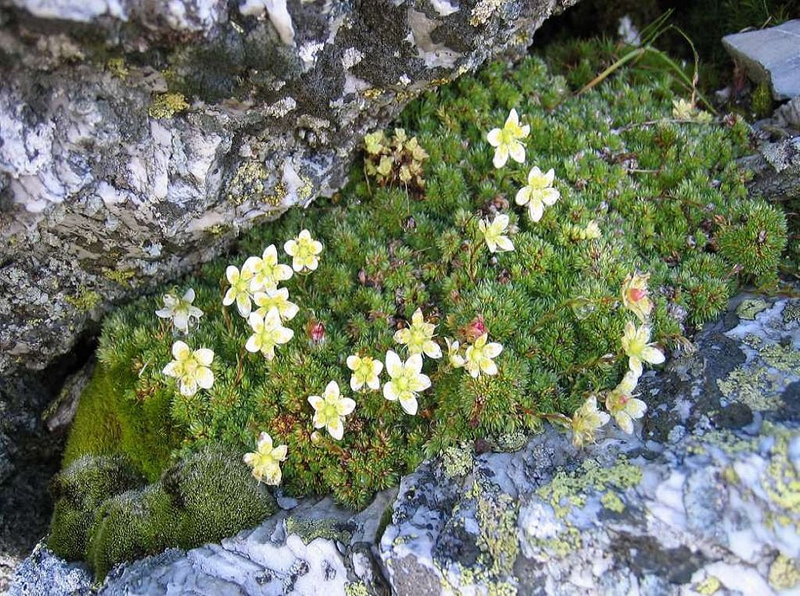How to Grow Creeping saxifrage or Strawberry Begonia in your pot and garden
Saxifrage or Strawberry Begonia is an amazing ground cover perennial from the Saxifrage family. It is able to survive and flourish in conditions that are unsuitable for many living organisms. The saxifrage can be found at the foot of the mountains, on rock gardens and rocky mounds. It got its name for the ability to settle in the smallest cracks and gradually destroy the stone with its roots. The plant is also called “gap-grass”. In nature, it grows in temperate climates throughout the Northern Hemisphere and is successfully cultivated in gardens as a ground cover.
Eschscholzia californica Cham Gold Poppy for amazing flowerbeds and gardens

Botanical description
Saxifrage is a rhizomatous plant 5-70 cm high. They have long creeping stems. The plant is nourished by thin, branched roots. They are at the base of the processes and are also formed in the internodes of the shoots upon contact with the ground. As a result, loose turf grows very quickly.
Petiole leaves are collected in a basal rosette. They vary greatly in some species. The fleshy or leathery leaf plate can have a variety of shapes (oval, heart-shaped, diamond-shaped, pinnate). Leaves are smooth or slightly hairy. They are painted in dark green, silver, gray, or bluish. The leaves are gradually covered with a white bloom, it is especially noticeable at the edges. In fact, these are lime deposits that are released by the plant itself.
From May-August, the saxifrage is covered with small flowers. Correctly shaped corollas on vertical arrows up to 20 cm long are collected in loose panicles. They consist of five petals with a pointed edge, so they resemble a star or a wide-open bell. The flowers are most often white, but yellow, pink and red are also found. They exude a subtle pleasant aroma.
The saxifrage is pollinated by insects, but it is also prone to self-pollination with the help of wind. In September, fruits are tied – multi-seeded boxes with dark small oblong seeds.

Vegetative reproduction
Creeping shoots take root on their own. Roots form in the axils of the leaves upon contact with the ground. It is enough to cut off the rooted shoot from the mother plant and carefully transplant it to a new place with a clod of earth. Honestly, daughter rosettes are formed on the stems even without contact with the ground. They grow aerial roots. In the spring, the shoot is cut off and planted in open ground.
Shoots 5-10 cm long are cut into cuttings in summer. You can root them in water or loose sandy-peat soil. In autumn, a full-fledged small plant is obtained, but it is not yet ready for wintering in the garden. It is grown indoors and only transplanted outside next spring.
Aubrieta: A rocky ground cover beauty in your garden
Landing and care at home
Saxifraga is a very tenacious and unpretentious plant. They are grown in open ground and are also used as indoor flowers. Plants develop best in well-lit areas or in partial shade. In the garden for seedlings, shallow pits are prepared at a distance of 15-20 cm from each other. The saxifrage is undemanding to the composition of the soil but prefers loose, well-drained substrates with a slightly alkaline reaction. The soil is dug up with slaked lime, gravel, sand, and peat before planting.
Indoor flowers are planted 2-3 plants together to get a denser bush. They are transplanted as needed when the flower becomes crowded in a pot. The container is selected shallow, but wide enough. Pebbles, broken bricks, or expanded clay are necessarily poured into the bottom with a thick layer.

During the period of active growth, the optimum temperature for saxifrage is + 20 … + 25 ° C. For the winter, it is lowered to + 12 … + 15 ° C. Variegated varieties are not recommended to fall below +15…+18°C. If indoor flowers are kept warm in winter, additional lighting is needed, otherwise, the stems will stretch out a lot.
The saxifrage feels best at high humidity, so the sods need to be sprayed periodically. Watering is done by sprinkling. It is necessary to moisten the soil with care so that the water does not stagnate at the roots, and the top layer has time to dry out. The saxifrage covers the entire soil, so there is no need to weed the soil near it. It also successfully suppresses weeds.
In spring and summer, saxifrage thickets are fertilized twice a month. Usually alternate organic with mineral complexes. In winter, feeding is continued, but they are carried out less frequently (every 1.5-2 months).
The plant overwinters in temperate climates without shelter. Even if some of the shoots freeze in severe snowless winters, young shoots will appear from growth points in early spring and close the bald spots on the ground. Peduncles live only one year and dry out in autumn.
Indoor flowers are cut in half in spring in order to preserve the decorative effect of the bush longer. But in any case, after 5-6 years, the plant needs to be rejuvenated, since the bases of the shoots are strongly stretched and exposed.

Zephyranthes or Rain Lily: A hardy bulb for pot and rock gardens
Use of saxifrage
A delicate green carpet, over which pink and white flowers on long stems rise like artificial ones, is suitable for landscaping rockeries, alpine hills, and decorating masonry. The saxifrage easily decorates voids and decorates borders. It is also used in indoor gardening and as an ampelous plant. Phloxes, tiarellas, lingonberries, or Chinese gentian can become partners for saxifrage.
The use of saxifrage as a medicine is known. Its leaves contain a large number of flavonoids, alkaloids, saponins, organic acids, and coumarins. Decoctions are taken as an anti-inflammatory, anti-febrile, and analgesic drugs. With their help, bronchitis, tonsillitis, gout, hemorrhoids, purulent rashes, and skin ulcers are treated.




















